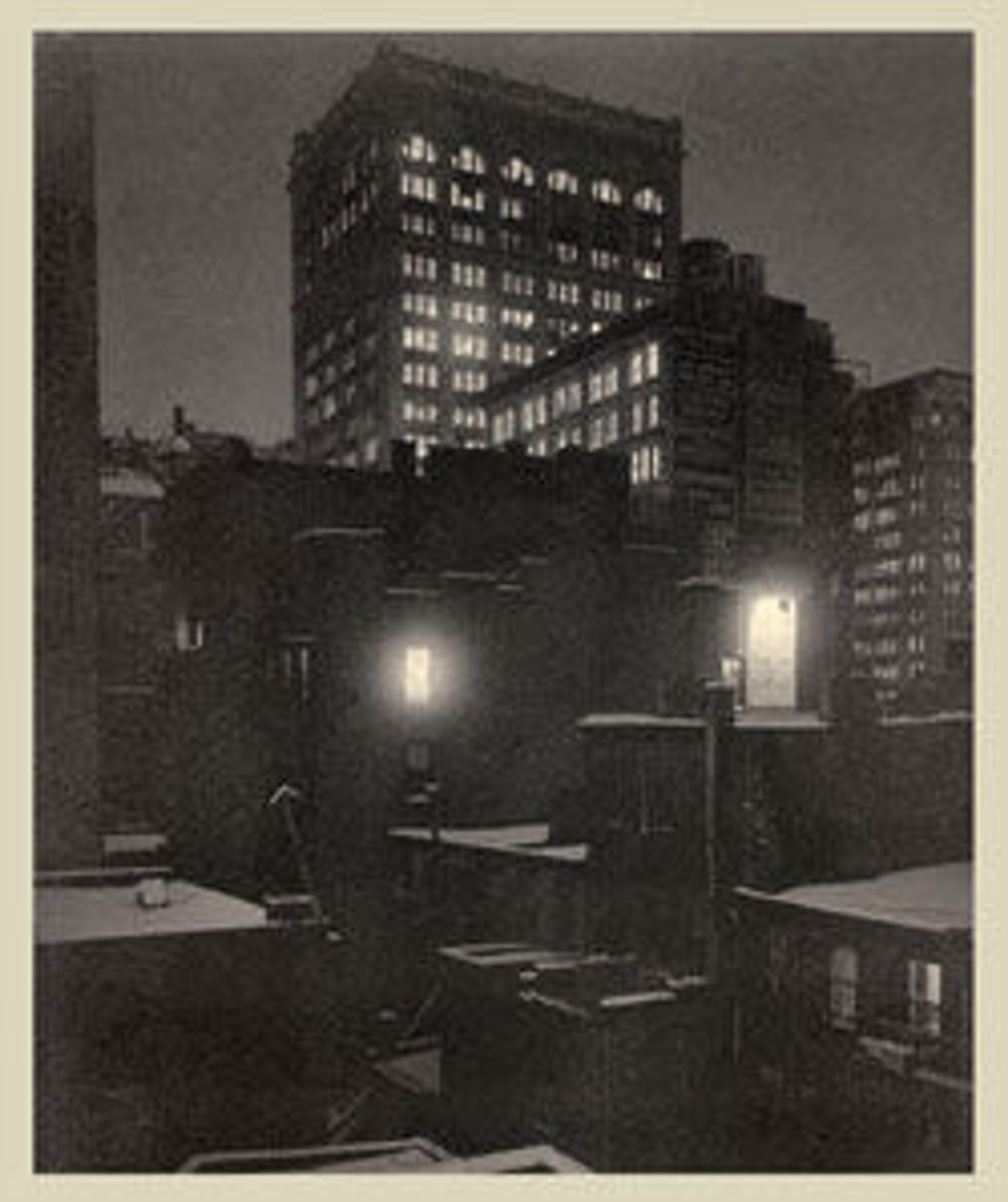Pears and Bowls
The two most significant early influences on Paul Strand were Lewis Hine and Alfred Stieglitz. In his course at the Ethical Culture School in New York, which Strand attended, Hine encouraged photographic documentation in the service of social reform. And Alfred Stieglitz, Strand's mentor for many years, viewed photography as a means to aesthetic reform. Strand channeled the sense of moral commitment to the photographic medium shared by both these men into his own photographs of everyday life, in which he attempted to combine social consciousness with aesthetic concerns by placing the city dweller within the context of the formal geometry of urban architecture. In 1916 and 1917, Stieglitz devoted the last two issues of "Camera Work" to Strand's photographs, proclaiming them the most original then being made in America. Critics praised the images for their directness, honesty, and objectivity and for the elimination of technical manipulation and handwork--all characteristics that have come to define the term "straight photography."
Strand began in 1916 to explore the structural principles of pictorial abstraction that he had absorbed from the Cubist works exhibited at 291 and other New York galleries. Summering at Twin Lakes, Connecticut, he incorporated porch furniture and kitchenware--materials readily at hand in a summer house--into his still-life compositions. These were the first photographs intentionally constructed as abstractions. The tightly framed, close-up investigation of domestic objects seen here is divested of the symbolic and allegorical underpinnings traditionally associated with still life, asserting instead the geometry of black-and-white tones juxtaposed as planar surfaces.
Strand began in 1916 to explore the structural principles of pictorial abstraction that he had absorbed from the Cubist works exhibited at 291 and other New York galleries. Summering at Twin Lakes, Connecticut, he incorporated porch furniture and kitchenware--materials readily at hand in a summer house--into his still-life compositions. These were the first photographs intentionally constructed as abstractions. The tightly framed, close-up investigation of domestic objects seen here is divested of the symbolic and allegorical underpinnings traditionally associated with still life, asserting instead the geometry of black-and-white tones juxtaposed as planar surfaces.
Artwork Details
- Title:Pears and Bowls
- Artist:Paul Strand (American, New York 1890–1976 Orgeval, France)
- Date:1916
- Medium:Silver-platinum print
- Dimensions:Image: 25.7 x 28.8cm (10 1/8 x 11 5/16in.)
Sheet: 26.7 x 31.7 cm (10 1/2 x 12 1/2 in.) - Classification:Photographs
- Credit Line:Gilman Collection, Purchase, Ann Tenenbaum and Thomas H. Lee Gift, 2005
- Object Number:2005.100.137
- Rights and Reproduction:© Aperture Foundation, Inc., Paul Strand Archive
- Curatorial Department: Photographs
More Artwork
Research Resources
The Met provides unparalleled resources for research and welcomes an international community of students and scholars. The Met's Open Access API is where creators and researchers can connect to the The Met collection. Open Access data and public domain images are available for unrestricted commercial and noncommercial use without permission or fee.
To request images under copyright and other restrictions, please use this Image Request form.
Feedback
We continue to research and examine historical and cultural context for objects in The Met collection. If you have comments or questions about this object record, please contact us using the form below. The Museum looks forward to receiving your comments.
